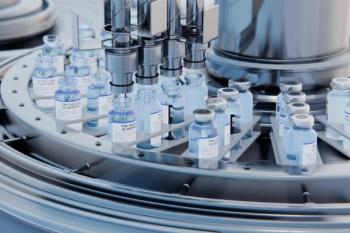
US Drug Prices Distorted to Favor Pharmacy Benefit Managers
PBMs use hidden rebates and other strategies to rig drug pricing and sidestep regulatory efforts
It’s easy to ask what a drug costs; patients ask every day. It’s tough, though, to give them an accurate answer.
“There is no ‘price’ for a drug in the United States,” said Antonio Ciaccia, Senior Advisor for Disruptive Innovation and Practice Transformation for the American Pharmacists Association (APhA) and President of industry consultant 3 Axis Advisors. “Price varies by time and your place in the distribution chain. Drug prices are hidden, set by contract, and are being manipulated by pharmacy benefit managers.”
Ciaccia attempted to clear some of the smoke, mirrors, and confusion around drug prices during his presentation at the APhA Annual Meeting and Exposition in San Antonio, Texas.
Pharmacy benefit managers (PBMs) began intermediaries and claims processors between insurers and pharmacies. Today, 3 PBMs—CVSCaremark, Express Scripts, and OptumRx—control about 80% of the United States pharmaceutical market with vertically integrated organizations that include insurers, pharmacies, rebate aggregators, and other industry players.
Every organization and level in the distribution chain, from manufacturers to patients, has its own private contracts and rebates, both acknowledged and disguised. The rebates that grease the wheels of the drug distribution chain would be called kickbacks in any other business, Ciaccia continued, but are legal in this particular industry.
“PBMs advertise that they are the only entity working to control prescription drug costs,” he said, “but data show that PBM profits generated off prescription drug transactions heavily distorts their incentives to control drug spending for their clients.” The reality, he continued, is that formulary placement fees and other rebates give PBMs positive incentives to distort prices and increase their own profits. Each PBM promotes utilization of different mixes of drug products for different health plans. Different utilization mixes trigger different mixes of rebates and fees, making it more difficult to compare real costs.
Another problem? The entire drug distribution system is based on fake prices. List prices are artificial, Ciccia explained. So is average wholesale price. The AWP for 20 mg of omeprazole magnesium (Prilosec) in 2021 ranged from $0.30 per unit to nearly $9.
“We need a benchmark that isn’t set by somebody who makes money off those drugs,” he said.
Today’s rigged prices leave cash-pay patients and small employers paying list price or close to it. Large employers pay a bit less, followed by Part D Plan sponsors, Big 4 federal buyers—like Veterans Affairs, the Department of Defense, Public Health Service, and Coast Guard, with Federal Ceiling Price protection—and then Medicaid.
One result: An analysis concluded by 3 Axis Advisors found that a group of small, self-insured employers with combined drug spend of over $110 million in 2018 received about $5 million in rebates. Based on the Federal Supply Schedule, a proxy for the best commercial price, they should have received about $30 million in rebates. PBMs pocketed the difference.
The rebate retention game is played by rebate aggregators owned by, or affiliated with, the three largest PBMs: CVS/Zinc, ESI/Ascent, and Optum/Emisar.
Clients get rebate guarantees off list price on a per claim basis. But rebates are increasingly recategorized as mail-order purchase discounts, market share incentives, promotional allowances, commissions, market share utilization, drug pull-through programs, formulary placement fees, administrative fees, data fees, price concessions, volume-based incentives, and other payments not covered by rebate guarantees.
“The higher list prices rise, the more price concessions a PBM can collect and retain,” Ciaccia said.
In 2018, Ohio State Auditor David Yost reported that PBMs pocketed 31% of the state generic drug spend—$208 million in 1 year. In 2021, David Yost, now Attorney General of Ohio, accepted an apology and a check for $88 million from PBM Centene over alleged drug markups of more than $11 per prescription. The company settled similar claims with Mississippi for $55 million and set aside more than $1.1 billion for other states.
“The books are cooked,” Ciaccia said. “In Florida, about 60% of all calcipotriene spending came from one managed care organization. Its PBM billed as a brand, then classified it as a generic for pharmacies and clawed more than $1000 per claim.”
PBMs are playing similar games with Medicare Part D. In early 2019, the patient price for imatinib mesylate—the generic of Gleevec—ranged from $9.62 per pill to $315.74. A national study of dimethyl fumarate found that the largest insurers and PBMs were steering patients to the branded product at $8,275 per month, instead of toward a generic option available at a cost of $184.
“We need to rein in PBM abuses,” Ciccia said. “Strategies include Medicaid carve-outs or a single PBM; pass-through pricing with full transparency; prohibitions on patient steering; bans on spread pricing, gag clauses, co-pay clawbacks, and co-pay accumulators; pushing rebates through to patients; reverse auctions, and real fiduciary requirements. As list prices for drugs continue to rise, those who can engage in price-setting in the middle, PBMs, can continue to benefit significantly at great cost to drug purchasers.”
Reference
Ciaccia A. Unraveling US drug pricing distortions and their impact on pharmacies. Presented at: American Pharmacists Association 2022 Annual Meeting & Exposition; March 18-21, 2022; San Antonio, TX
Newsletter
Pharmacy practice is always changing. Stay ahead of the curve with the Drug Topics newsletter and get the latest drug information, industry trends, and patient care tips.




































































































































